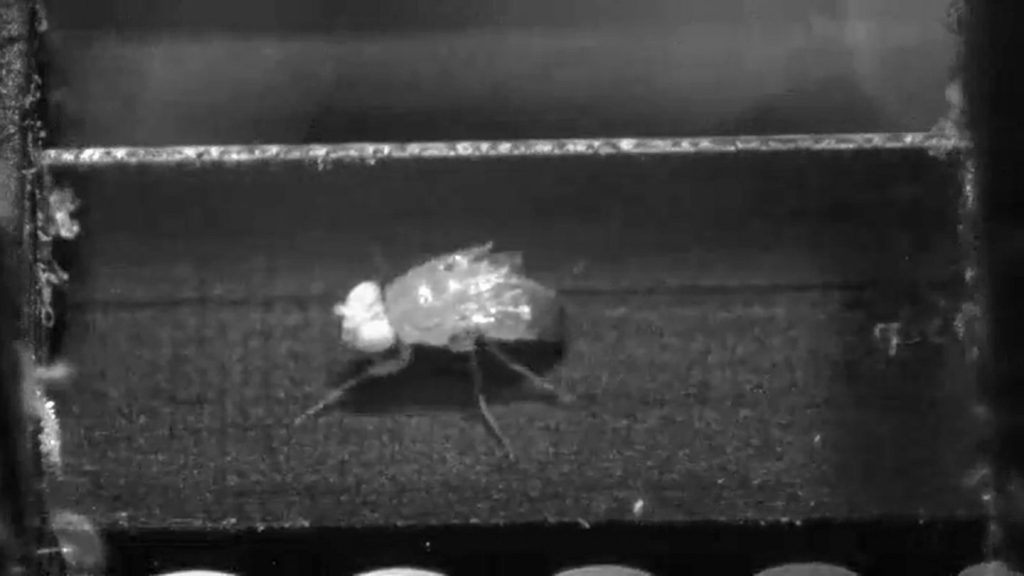Fruit flies have been observed running on a treadmill, providing insights about how their bodies move. The flies, also known as Drosophila melanogaster, were able to run forward on a tiny treadmill surrounded by high-speed cameras. This allowed researchers to study the basic movements of the flies and how their central nervous system controls aspects of walking. Understanding these movements is crucial for understanding how the brain controls movement in various animals, including humans.
The treadmill used in the experiments was made of simple materials like belts, pulleys, and motors, and was over four times the body length of the fruit flies. The experiments involved trimming the flies’ wings to prevent flight and surrounding the treadmill with a glass chamber coated with a slippery substance. As the treadmill moved, the flies ran normally, showing typical patterns of movement such as sprinting forward and then stopping. The flies could surprisingly hit speeds of up to 50 millimeters per second, showcasing their athletic abilities.
Some flies were able to handle long sessions on the treadmill, lasting up to an hour and a half. As the flies ran faster, their bodies moved higher, and they adjusted their steps to keep moving straight ahead. When tested on treadmills with two belts moving at different speeds, the flies’ middle legs compensated for the disparity, allowing them to maintain their forward movement. The experiments revealed new insights into the complex movements of fruit flies and how they adapt to various conditions.
While the treadmill experiments provided valuable data on movement, they lacked the ability to record neural activity in the moving flies. Other systems can offer more detailed insights into the brain activity of stationary flies, but they do not allow for natural movement like the treadmill setup. The experiments also led to some interesting observations, including a playful competition among researchers to find the most athletic fly and even conducting endurance training sessions for the flies.
In conclusion, the fruit fly treadmill experiments have shed light on the basic movements and adaptations of fruit flies when running on a treadmill. These insights provide valuable information on how these tiny insects move and how their central nervous system controls their walking behavior. The experiments have not only expanded our understanding of fruit fly locomotion but also sparked excitement and curiosity among researchers, leading to unexpected discoveries and new avenues of exploration in the field of neuroscience.


